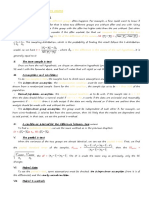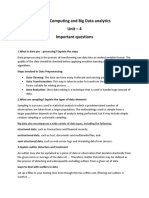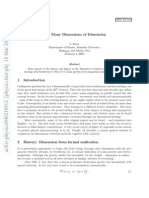0% found this document useful (0 votes)
10 views3 pagesIntroduction To Data Science
Data Science is an interdisciplinary field that extracts insights from data using scientific methods and algorithms. The data science process includes problem definition, data collection, cleaning, exploration, modeling, evaluation, and deployment. It employs various tools and techniques, with applications in healthcare, finance, marketing, and transportation, enabling organizations to make data-driven decisions.
Uploaded by
yasaci7644Copyright
© © All Rights Reserved
We take content rights seriously. If you suspect this is your content, claim it here.
Available Formats
Download as PDF, TXT or read online on Scribd
0% found this document useful (0 votes)
10 views3 pagesIntroduction To Data Science
Data Science is an interdisciplinary field that extracts insights from data using scientific methods and algorithms. The data science process includes problem definition, data collection, cleaning, exploration, modeling, evaluation, and deployment. It employs various tools and techniques, with applications in healthcare, finance, marketing, and transportation, enabling organizations to make data-driven decisions.
Uploaded by
yasaci7644Copyright
© © All Rights Reserved
We take content rights seriously. If you suspect this is your content, claim it here.
Available Formats
Download as PDF, TXT or read online on Scribd
/ 3
























































































